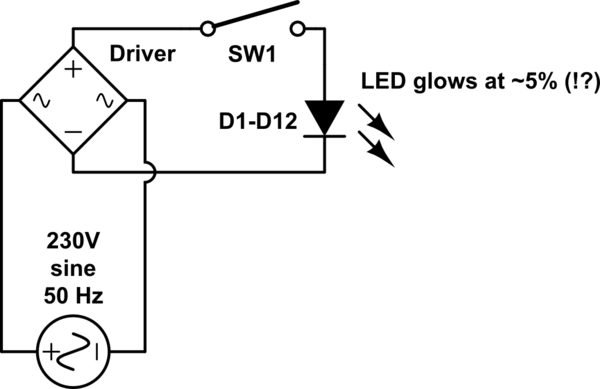I have a constant current LED driver which keeps the LEDs at about 5% glow when the AC side when the driver has its phase terminal connected to live power and its neutral terminal not connected to anything.
Detailed configuration under regular working wiring:

simulate this circuit – Schematic created using CircuitLab
Whilst trying to figure out a way to absorb the leaking energy so that the LEDs do get to 0% instead of 5%, I noticed some weird behaviours on the DC side of the driver:
- Under the context described above (only one wire, live, on the AC terminals,) disconnecting one of the terminals on the DC side results in the LEDs still glowing, at about 0.5%; this is very very weak, but still there.

- Then, keeping one of the DC terminals disconnected, but going back to connecting the AC terminals under a regular phase + neutral scenario, the LEDs are back glowing at 5%.

To sum up, after disconnecting one of the AC and one of the DC terminals of the driver, the LEDs are still getting some power in, even if very little. When I measured the voltage, it was around 3 volts, but I suspect this measurement was altered by the multimeter.
In my humble opinion, LEDs lighting up when one end of the circuit is disconnected from the source of power cannot be explained if we consider DC power.
Since the driver is a constant current supplier, I suppose the following is happening when a DC terminal is disconnected: "Infinite" resistance, which means the voltage gets very high, and might be sufficient for some current to travel through the diodes of the bridge rectifier, at counter current.
Is it possible that when this DC cable is disconnected, the voltage on the DC side of the bridge rectifier is so high that the diodes of this bridge cannot block the reverse voltage, and the DC terminals become AC terminals hence, propagating the capacitance effect from the AC side?
